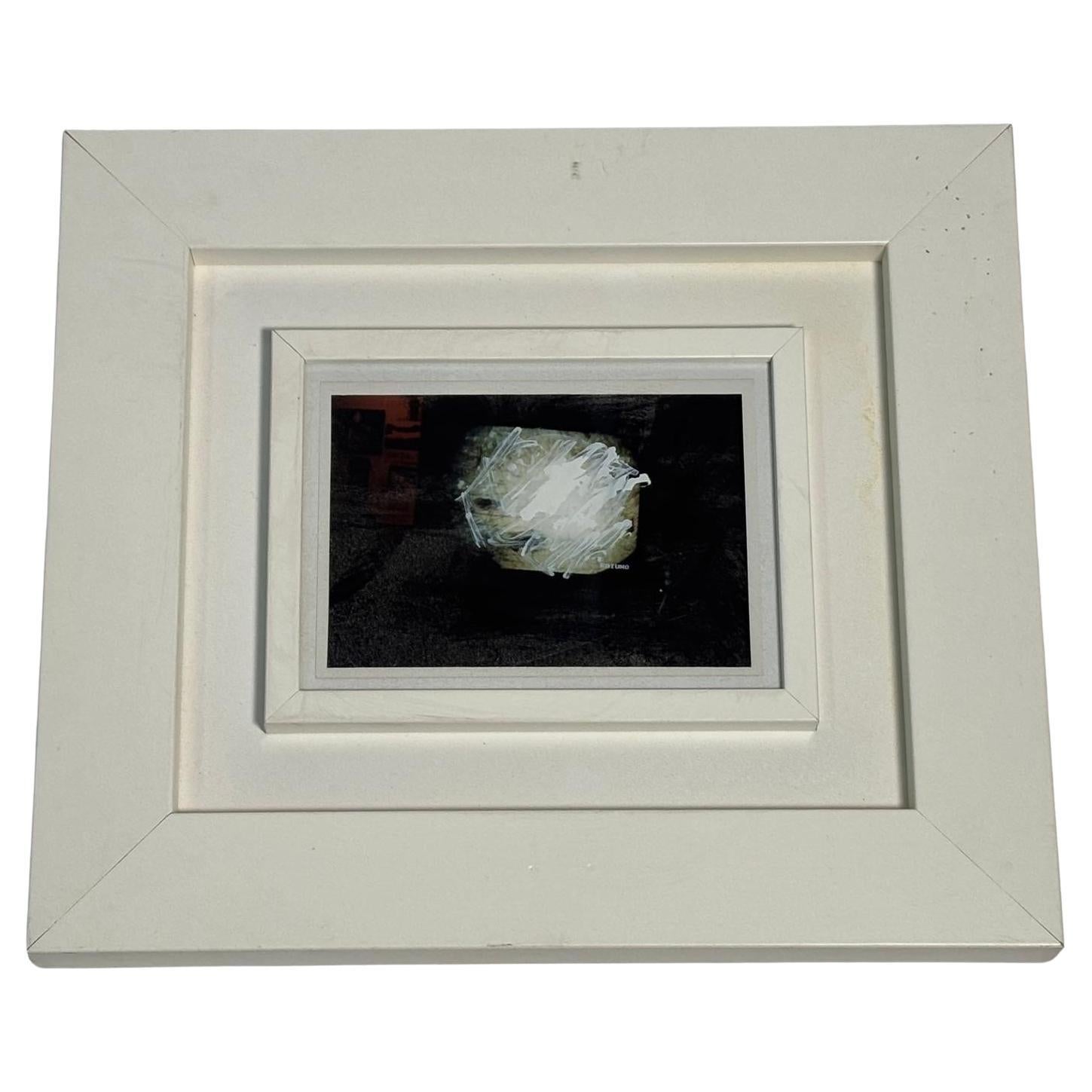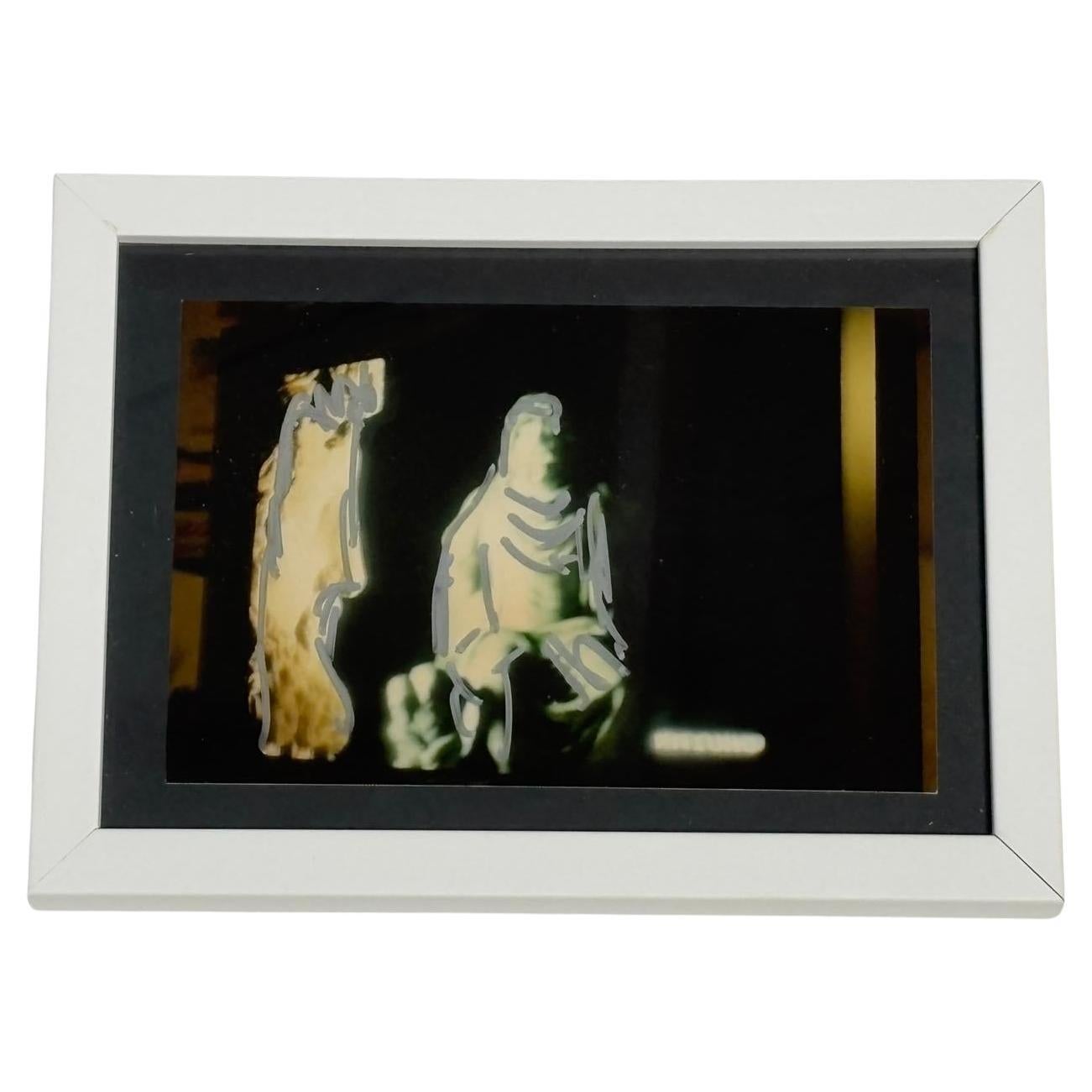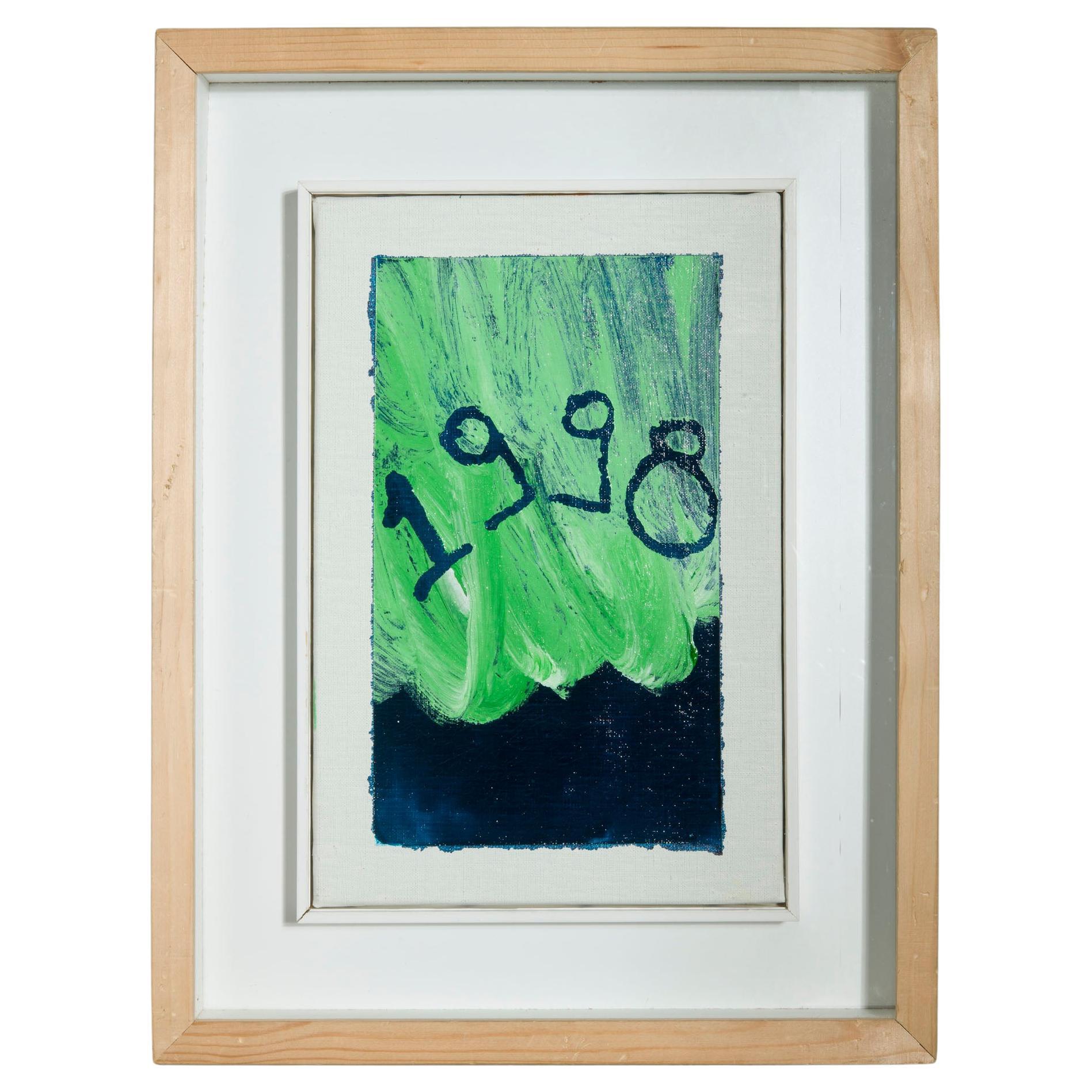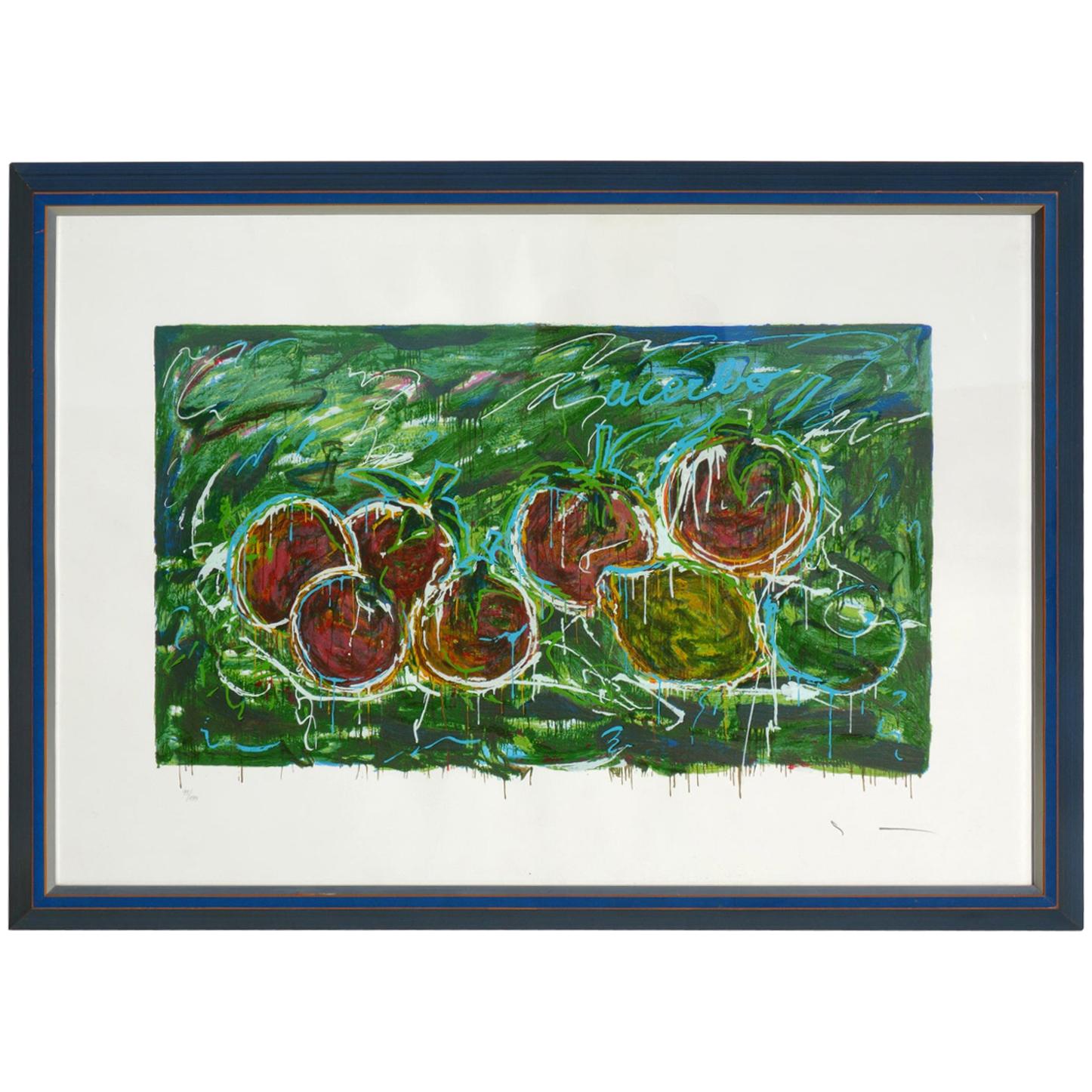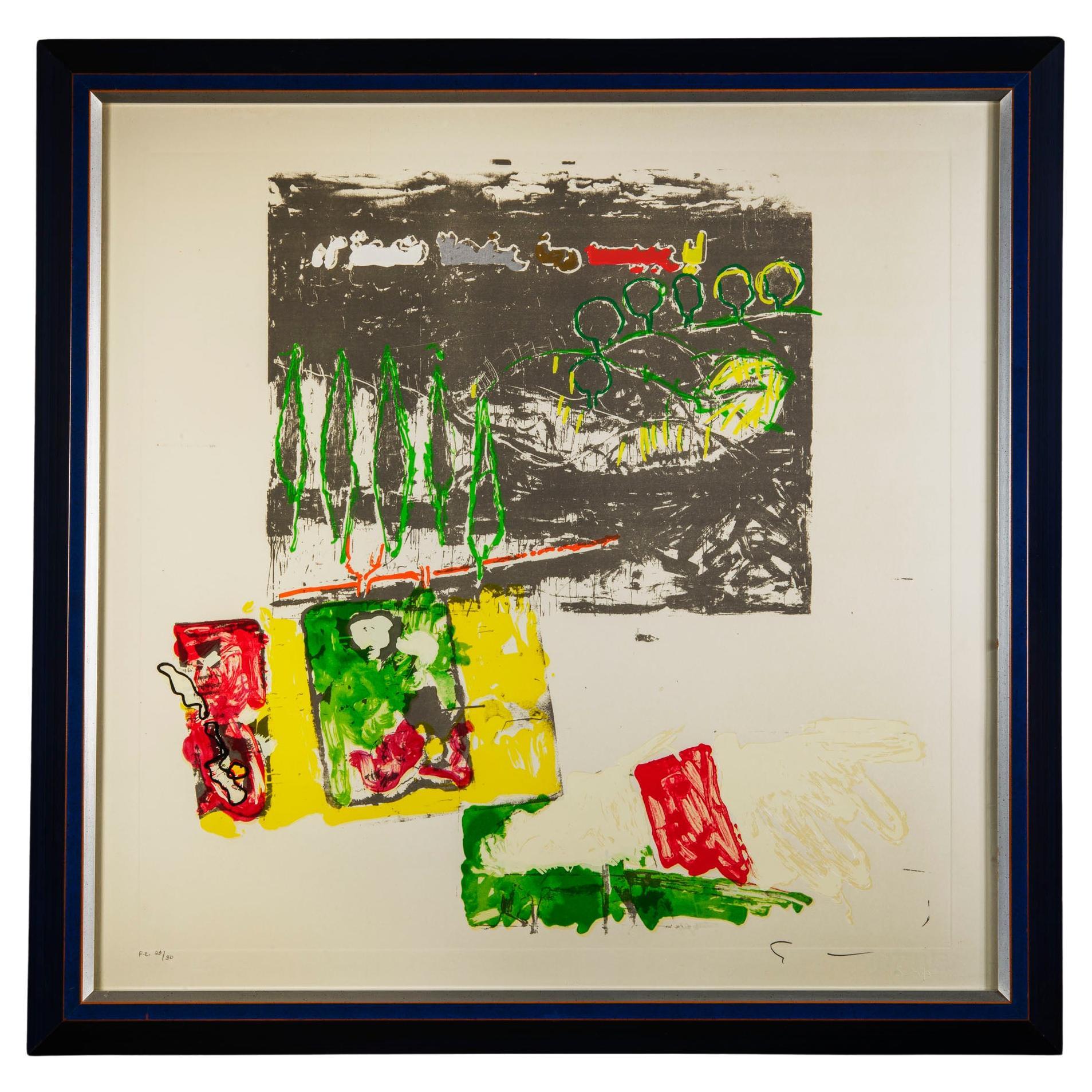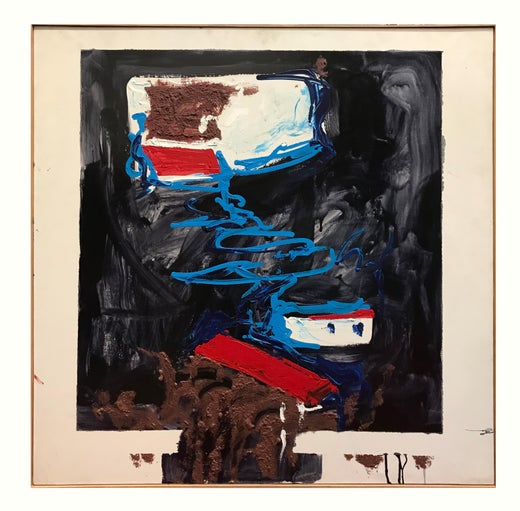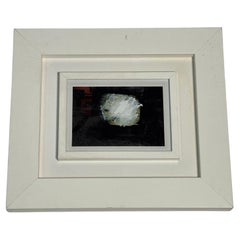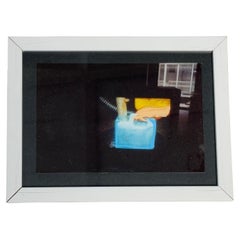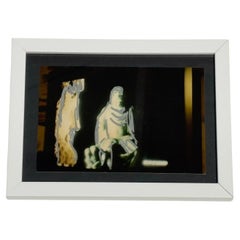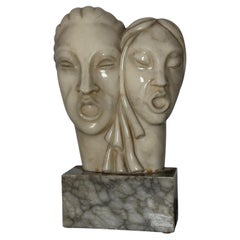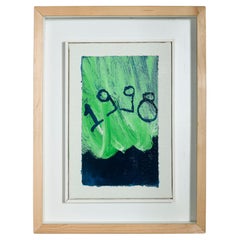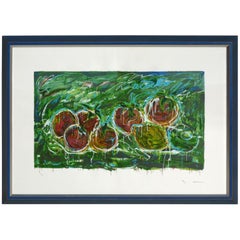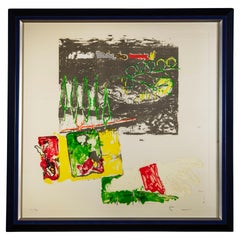Items Similar to Hand-retouched Photograph by Mario Schifano
Want more images or videos?
Request additional images or videos from the seller
1 of 8
Hand-retouched Photograph by Mario Schifano
About the Item
Without title mixed technique on photograph by Mario Schifano made in 1990-97.
Inscription on the back: signature "Schifano"
With certificate of authenticity. Unique piece.
Biography
In the early 1970s, Mario Schifano experienced a crisis in relation to painting, a crisis that coincided with a general reconsideration of pictorial tradition, triggered by the success of conceptual neo-avant-gardes. The artist then developed a completely new imaginary, based on the media images constantly streaming on the always-on television screens at home and in his studio.
With his particular multimedia sensitivity, Schifano photographed images of all kinds transmitted by television, extracting and reformulating the image through an operation that blends photography and painting. He worked, as always, with immediacy and speed. The photo passed through his painterly manual dexterity and was captured in time. That concept of the "flow of images" which constitutes the life and art of Schifano was perfected and clarified: reality constantly mediated by a filter, transforming it into an image.
Mario Schifano was born on September 20, 1934, in Homs, Italian Libya. After the end of the war, he returned to Rome. Considered by many as a leading figure of Italian pop art, he was seen as Andy Warhol's heir, representing a cornerstone of contemporary Italian and European art. A passionate student of new painting techniques, in the early 1970s he began transferring images seen and photographed on TV onto emulsified canvases, isolating these visual fragments from the narrative rhythm of the sequences to which they belonged. In the following years, Schifano, already fascinated by media communication and contemporary icons created by television, was among the first to experiment with hybrids between painting and other art forms such as music, cinema, video, and photography. In fact, he used computers to create artworks and managed to elaborate images from the computer and transfer them back onto emulsified canvases (the "Computerized Canvases").
- Creator:Mario Schifano (Artist)
- Dimensions:Height: 3.94 in (10 cm)Width: 5.91 in (15 cm)Depth: 1.19 in (3 cm)
- Style:Modern (Of the Period)
- Materials and Techniques:
- Place of Origin:
- Period:1990-1999
- Date of Manufacture:1990-97
- Condition:
- Seller Location:Milan, IT
- Reference Number:1stDibs: LU2140344374302
Mario Schifano
Mario Schifano (1934-1968) is considered one of the most significant artists of Italian postmodernism. He worked in numerous media throughout his career, but is perhaps best known for his collages consisting of advertising, scrap paper and painted components. During the latter half of his career, Schifano’s work became increasingly political as he explored issues such as the Vietnam War and widespread social unrest through both film and photography. Born in 1934 in Libya, Schifano and his family relocated to Rome after World War II. With little interest in formal schooling, Schifano took up painting independently and began producing mixed-media works, primarily utilizing monochromatic canvases with glued wrapping paper and stenciling applied. These works garnered critical acclaim, and were followed by a number of exhibitions both in Italy and the US. In 1962 he was included in New Realists, an important group show at the Sidney Janis Gallery in New York alongside artists such as Andy Warhol and Roy Lichtenstein. Often employing elements of pop culture, such as brand logos and advertisements, his work is largely considered within the context of Pop art. Although Schifano was consistently productive and critically acclaimed, he struggled with drug addiction for most of his life, a habit that resulted in multiple arrests, which led the artist to label his career maldoto – cursed. He died at the age of 63 in Rome in 1998 (Ref: Sotheby's). His artworks have sold for over 1M€ at Sotheby's.
About the Seller
5.0
Gold Seller
Premium sellers maintaining a 4.3+ rating and 24-hour response times
Established in 2006
1stDibs seller since 2016
320 sales on 1stDibs
Typical response time: 1 hour
- ShippingRetrieving quote...Shipping from: Asti, Italy
- Return Policy
Authenticity Guarantee
In the unlikely event there’s an issue with an item’s authenticity, contact us within 1 year for a full refund. DetailsMoney-Back Guarantee
If your item is not as described, is damaged in transit, or does not arrive, contact us within 7 days for a full refund. Details24-Hour Cancellation
You have a 24-hour grace period in which to reconsider your purchase, with no questions asked.Vetted Professional Sellers
Our world-class sellers must adhere to strict standards for service and quality, maintaining the integrity of our listings.Price-Match Guarantee
If you find that a seller listed the same item for a lower price elsewhere, we’ll match it.Trusted Global Delivery
Our best-in-class carrier network provides specialized shipping options worldwide, including custom delivery.More From This Seller
View AllHand-retouched Photograph by Mario Schifano
By Mario Schifano
Located in Milan, Italy
Without title mixed technique on photograph by Mario Schifano made in 1990-97.
Inscription on the back: signature "Schifano"
With certificate of authenticity. Unique piece.
Biograp...
Category
1990s Italian Modern Photography
Materials
Acrylic
Hand-retouched Photograph by Mario Schifano
By Mario Schifano
Located in Milan, Italy
Without title mixed technique on photograph by Mario Schifano made in 1990-97.
Inscription on the back: signature "Schifano"
With certificate of authenticity. Unique piece.
Biograp...
Category
1990s Italian Modern Photography
Materials
Acrylic
Hand-retouched Photograph by Mario Schifano
By Mario Schifano
Located in Milan, Italy
Without title mixed technique on photograph by Mario Schifano made in 1990-97.
Inscription on the back: signature "Schifano"
With certificate of authenticity.
Biography
In the early...
Category
1990s Italian Modern Photography
Materials
Acrylic
Alabaster Sculpture by Mario Urbani, Volterra
Located in Milan, Italy
Alabaster sculpture designed and produced by Mario Urbani in 1930, Volterra. Single piece.
Biography
Urbani, Mario, architect, painter, artist, (Rome 1885 - Pesaro 1961), SIUSA
Mar...
Category
Vintage 1930s Italian Mid-Century Modern Figurative Sculptures
Materials
Alabaster
Italian Murano Glass Vase Sogni Infranti Model by Mario Bellini for Venini.
By Venini, Mario Bellini
Located in Milan, Italy
Vase model Sogni Infranti iridescent glass with application of processing scraps polychrome glass, 1994. Designed by Mario Bellini. Signed.
Category
1990s Italian Modern Vases
Materials
Glass
Gio Ponti Silver Metal Sculpture Model Hand 5 Fingers for Sabattini, Italy
By Gio Ponti, Lino Sabattini
Located in Milan, Italy
Silver metal model hand 5 fingers designed by Gio Ponti for Sabattini in 1978.
Signed.
Biography
Architect, designer and artist, Gio Ponti (Milan 1891-1979) graduated in Milan in 19...
Category
Vintage 1970s Italian Modern Figurative Sculptures
Materials
Metal
You May Also Like
1990s Signed Mario Schifano Artwork
By Mario Schifano
Located in Roma, IT
Enamel on canvas "Untitled" signature on the back.
Certification by the artist is present.
Archived in 1997 Monte Titano Arte
General Archive of Mario Schifano's paintings n. 713/97 dated 19.09.1997 Monte Titano Arte. Bibliography: the work is present in III° Mario Schifano Works on Canvas 1991-1998 page 401
The dimensions are without frame.
This painting, comes from a private collection and is beautified by an impressive original frame in natural wood, in almost perfect condition.
The painting is also protected by glass
Every item of our Gallery, upon request, is accompanied by a certificate of authenticity issued by Sabrina Egidi official Expert in Italian furniture for the Chamber of Commerce of Rome and for the Rome Civil Courts.
Mario Schifano (Homs 1934 - 1998) was an Italian painter and filmmaker.
Together with Franco Angeli and Tano Festa he represented a fundamental point of Italian and European Pop Art.
Perfectly integrated in the international cultural scene of the 1960s, he was reputed to be a prolific, exuberant and drug-addicted artist.
A keen student of new painting techniques, he was among the first to use computers to create works and was able to process images from the computer and transfer them onto emulsified canvases.
Mario Schifano was born in Italian Libya and after the end of the war returned to Rome where, due to his restless personality, he left school early to follow in his father's footsteps who worked at the Etruscan museum of Villa Giulia as an archaeologist and restorer.
Thanks to this experience, he approached art, initially producing works that were influenced by Informal Art.
His first solo exhibition was at the Galleria Appia Antica in Rome in 1959.
In the late 1950s, he participated in the artistic movement Scuola di Piazza del Popolo together with artists such as Francesco Lo Savio, Mimmo Rotella, Giuseppe Uncini, Giosetta Fioroni, Tano Festa and Franco Angeli.
The group met at Caffè Rosati, a Roman café then frequented by Pier Paolo Pasolini, Alberto Moravia and Federico Fellini, among others, and located in Piazza del Popolo, from which they took their name.
In 1960, the group's works were exhibited in a group show at Galleria La Salita.
In 1961 he exhibited in a solo show at Galleria La Tartarugadi Plinio De Martiis in Rome.
In the meantime, he had met, among others, his future lover Anita Pallenberg at the Caffè Rosati, with whom he made his first trip to New York in 1962, where he came into contact with Andy Warhol and Gerard Malanga at the Factory.
During this period he participated in the New Realists exhibition at the Sidney Janis Gallery, a group show that included most of the young artists of Pop art and Nouveau Réalisme, including Andy Warhol and Roy Lichtenstein.
He then had the opportunity to participate in the New York social scene, which led to his first experiments with LSD.[6]
On his return from New York, after participating in exhibitions in Rome, Paris and Milan, he took part in the XXXII International Art Exhibition in Venice in 1964.
During this period, his paintings defined as 'Anemic Landscapes', in which it is memory that evokes the representation of nature with small details or allusive inscriptions, and the reinterpretations of art history that later led to his famous pictorial works on futurism appear in embryo.
In Rome, he met and frequented Marco Ferreri and Giuseppe Ungaretti to whom, already in his 80s, he offered an evening at Peyote.
But one of the acquaintances of this period that most influenced him was that with Ettore Rosboch, with whom he formed a deep friendship, based on a shared passion for music. In those years, also thanks to their constant trips to London, the two became friends with the Rolling Stones, to whom they introduced Anita Pallenberg, who in 1965 began a relationship with Brian Jones, and years later became Keith Richards' partner.
In 1969, the flat in Piazza in Piscinula in Rome that then belonged to Schifano was used by Ferreri as the set for the film Dillinger is Dead, on the walls of which some of the artist's paintings can be seen.
In 1969, the Rolling Stones dedicated the song Monkey Man to Mario Schifano.
In 1971 some of his paintings were included by Achille Bonito Oliva in the exhibition Vitalità nel negativo nell'arte italiana 1960/70.
Many of his works, the so-called 'monochromes', present only one or two colours, applied on wrapping paper glued on canvas.
The influence of Jasper Johns was manifested in the use of numbers or isolated letters of the alphabet, but in Schifano's way of painting analogies can be traced to the work of Robert Rauschenberg.
In a painting from 1960, one can read the word 'no' painted with drips of colour in large capital letters, as in a wall graffiti.
The influence of Pop art can be seen in all the artistic production of Mario Schifano, who was fascinated by new technologies, advertising, music, photography and experimentation.
In particular, the artist's closest works to Pop Art are those of the 1980s.
Among the most important works of this period are the Propagande, a series dedicated to advertising brands (Coca-Cola and Esso) in which we have a clear example of the conveyance of commonly used and easily recognisable images quoted in multiple ways or details of them, bicycles, flowers and nature in general (among the most famous series are the Paesaggi anemici, Vedute interrotte, L'albero della vita...
Category
1990s Italian Mid-Century Modern Paintings
Materials
Canvas, Glass, Wood
Mario Schifano "Acerbi" Materic Serigraph with frame
By Mario Schifano
Located in Brescia, IT
Mario Schifano
"Acerbi"
Year: 1990s
Medium: Materic serigraph
Edition: 99/199
Frame size: 110 x 80 x 5 cm
Signed and numbered.
Category
1990s Italian Modern Contemporary Art
Materials
Wood, Paper
1980s Signed Mario Schifano Artwork on Paper
By Mario Schifano
Located in Roma, IT
Materic silkscreen print “Ondate di gelo” (Frost Waves) by Mario Schifano.
Signature and numbering in pencil on front side.
Dry stamp of the artist on front.
Edition F.C. (Not for sale) 23/30. Framed work.
The artwork for sale is part of the collection 'Best Seller: 31 graphic works by Mario Schifano' edited by Edizioni Torcular Edition on handmade paper with Torcular watermark by Cartiera Magnani of Pescia Printer: Egiziano Piersantini
This artwork, never before on the market, comes from a private collection and is beautified by an impressive original frame in natural wood, in almost perfect condition.
The painting is also protected by glass
Every item of our Gallery, upon request, is accompanied by a certificate of authenticity issued by Sabrina Egidi official Expert in Italian furniture for the Chamber of Commerce of Rome and for the Rome Civil Courts.
Mario Schifano (Homs 1934 - 1998) was an Italian painter and filmmaker.
Together with Franco Angeli and Tano Festa he represented a fundamental point of Italian and European Pop Art.
Perfectly integrated in the international cultural scene of the 1960s, he was reputed to be a prolific, exuberant and drug-addicted artist.
A keen student of new painting techniques, he was among the first to use computers to create works and was able to process images from the computer and transfer them onto emulsified canvases.
Mario Schifano was born in Italian Libya and after the end of the war returned to Rome where, due to his restless personality, he left school early to follow in his father's footsteps who worked at the Etruscan museum of Villa Giulia as an archaeologist and restorer.
Thanks to this experience, he approached art, initially producing works that were influenced by Informal Art.
His first solo exhibition was at the Galleria Appia Antica in Rome in 1959.
In the late 1950s, he participated in the artistic movement Scuola di Piazza del Popolo together with artists such as Francesco Lo Savio, Mimmo Rotella, Giuseppe Uncini, Giosetta Fioroni, Tano Festa and Franco Angeli.
The group met at Caffè Rosati, a Roman café then frequented by Pier Paolo Pasolini, Alberto Moravia and Federico Fellini, among others, and located in Piazza del Popolo, from which they took their name.
In 1960, the group's works were exhibited in a group show at Galleria La Salita.
In 1961 he exhibited in a solo show at Galleria La Tartarugadi Plinio De Martiis in Rome.
In the meantime, he had met, among others, his future lover Anita Pallenberg at the Caffè Rosati, with whom he made his first trip to New York in 1962, where he came into contact with Andy Warhol and Gerard Malanga at the Factory.
During this period he participated in the New Realists exhibition at the Sidney Janis Gallery, a group show that included most of the young artists of Pop art and Nouveau Réalisme, including Andy Warhol and Roy Lichtenstein.
He then had the opportunity to participate in the New York social scene, which led to his first experiments with LSD.[6]
On his return from New York, after participating in exhibitions in Rome, Paris and Milan, he took part in the XXXII International Art Exhibition in Venice in 1964.
During this period, his paintings defined as 'Anemic Landscapes', in which it is memory that evokes the representation of nature with small details or allusive inscriptions, and the reinterpretations of art history that later led to his famous pictorial works on futurism appear in embryo.
In Rome, he met and frequented Marco Ferreri and Giuseppe Ungaretti to whom, already in his 80s, he offered an evening at Peyote.
But one of the acquaintances of this period that most influenced him was that with Ettore Rosboch, with whom he formed a deep friendship, based on a shared passion for music. In those years, also thanks to their constant trips to London, the two became friends with the Rolling Stones, to whom they introduced Anita Pallenberg, who in 1965 began a relationship with Brian Jones, and years later became Keith Richards' partner.
In 1969, the flat in Piazza in Piscinula in Rome that then belonged to Schifano was used by Ferreri as the set for the film Dillinger is Dead, on the walls of which some of the artist's paintings can be seen.
In 1969, the Rolling Stones dedicated the song Monkey Man to Mario Schifano.
In 1971 some of his paintings were included by Achille Bonito Oliva in the exhibition Vitalità nel negativo nell'arte italiana 1960/70.
Many of his works, the so-called 'monochromes', present only one or two colours, applied on wrapping paper glued on canvas.
The influence of Jasper Johns was manifested in the use of numbers or isolated letters of the alphabet, but in Schifano's way of painting analogies can be traced to the work of Robert Rauschenberg.
In a painting from 1960, one can read the word 'no' painted with drips of colour in large capital letters, as in a wall graffiti.
The influence of Pop art can be seen in all the artistic production of Mario Schifano, who was fascinated by new technologies, advertising, music, photography and experimentation.
In particular, the artist's closest works to Pop Art are those of the 1980s.
Among the most important works of this period are the Propagande, a series dedicated to advertising brands (Coca-Cola and Esso) in which we have a clear example of the conveyance of commonly used and easily recognisable images quoted in multiple ways or details of them, bicycles, flowers and nature in general (among the most famous series are the Paesaggi anemici, Vedute interrotte, L'albero della vita...
Category
Vintage 1980s Italian Mid-Century Modern Prints
Materials
Canvas, Glass, Wood
Dali Photograph by Philippe Halsman
By Philippe Halsman
Located in Atlanta, GA
Artist: Philippe Halsman (1906-1979)
Medium: Gelatin Silver Print
Title: Dali Clockface
Date: 1953; Printed in 1981 as part of the ten-piece Dali Portfolio...
Category
Vintage 1950s American Modern Photography
Materials
Wood, Paper
"Tulips" Photograph by Paulette Tavormina
By Paulette Tavormina
Located in Greenwich, CT
Paulette Tavormina lives and works in New York City. Amidst the bustle that defines the city, she can often be found at one of the city’s many farmers markets searching for the perfe...
Category
2010s American Modern Photography
Photograph of Marilyn Monroe by G. Barris Photograph, 1962
Located in Saint ouen, FR
Photograph of Marilyn Monroe by G. Barris
Photograph taken in 1962
Printed in 1987
Photograph signed by the photographer on the lower righ...
Category
Vintage 1960s Photography
Materials
Paper
